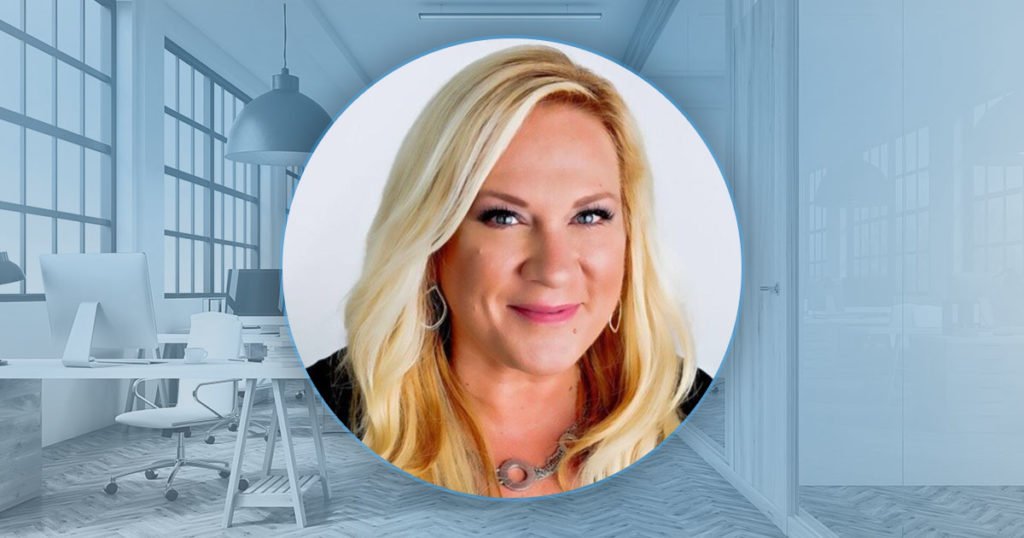Working with companies across the nation, XPG Recruit has a front-row seat to some of the best leaders in the business. When we see an example of great leadership, we like to highlight it to give others an opportunity to learn from it…
If you’ve been in the staffing industry long enough, you’re bound to see more than one “once in a lifetime” event. 9-11. The Great Recession. And the event that changed the whole world overnight: the 2020 COVID 19 pandemic. Stacey Lane has lived through them all, and the lessons she learned along the way are worth sharing.
Stacey is CEO of Staffmark Group, a family of specialty staffing and recruiting brands organized into three operating units: Administrative & Light Industrial Staffing Services, Technical & Professional Staffing Services, and Process Outsourcing Services. The company has 400 branches nationwide and places over 170,000 people each year.
Stacey has more than 27 years of staffing industry experience. She was named to the SIA Global 150 – Women in Staffing list, which celebrates the most influential women in the staffing industry, in both 2019, 2020, and 2022. Her bio says she “bets on a people-first strategy,” and that mindset was what got her company through the pandemic lockdowns with its culture and workforce intact. What doesn’t kill you makes you stronger, and Stacey believes her company and her team is stronger than ever after going through a once in a lifetime period of uncertainty.
Stacey is based in California, which was one of the first states to lock down. No one knew exactly what was happening or how long it would last, but everyone knew it was going to be rough. Staffmark Group’s leadership jumped into action. “Within a couple of hours, we were on the phone with one hundred of our team members, brainstorming ideas on how we could continue to deliver to our clients and talent in the field.”
Stacey says that the company’s strong values made some decisions easy. “Our first priority was the safety of our staff – keeping everyone healthy. Our second priority was to keep everyone working. We had several clients shut down, but we also got lucky. We work with several large national retailers, one of which needed immediate staffing to start up home delivery services – 6,000 workers, ASAP. We moved our internal resources to help wherever there was a need. Our market density helped us switch quickly and seamlessly to serving clients in essential industries”
Stacey told her team, from the top to the branches in the field, that the company has made a conscious decision to keep everyone employed. “We bet that this event, no matter how scary it seemed, was temporary. Our staff had plenty to worry about, but they didn’t have to worry about losing their jobs. We wanted all our staff to be there when, eventually, the workers affected by the pandemic would be needing new jobs in different industries.” In fact, when some offices were able to open, they actually kept extended hours to serve displaced workers who didn’t have access to Wi-Fi in their usual spots in coffee shops and libraries. Staffmark Group’s people-first policy empowered their staff to adopt people-first policies themselves.
While field staff focused on clients, the HR and IT teams focused on the company, writing policies and developing solutions on the fly. Before the pandemic, Stacey estimates that fewer than 10 percent of the company’s workforce ever worked remotely. Within a few weeks, the company had to figure out how to make everyone a remote worker, communicate effectively across hundreds of offices, and help staff deliver on business commitments, all the while not knowing what was coming next or how bad things could get. Having strong disaster recovery and contingency policies in place made the process fairly smooth, Stacey says.
She does remember the low point: the week of April 12, 2020. Revenue and hours were down 41 percent over the previous year. Nationwide, competitors, clients, and companies in every sector were slashing staff, cutting benefits, and implementing draconian short-term solutions to try to survive. But Stacey says that “people-first” means “people-first.” “I knew that our staff would remember the decisions we made in fear and darkness, and I wanted them to remember that we treated them – our most important asset – like our most important asset, even in uncertain times.”
Staffmark Group’s leadership team took the time during the first months of the pandemic to pursue business that would be still operating during lockdowns. They also strengthened how they measured what they do and thought about how they improve processes. They created a Future State Taskforce to implement automation and other ways to make the business more efficient. “We wanted to come out of this crisis stronger and better than before,” Stacey says. “Goals and incentive opportunities were rewritten to make them achievable through hard work and determination, even if they looked different than before the pandemic struck.“
Stacey says all the decisions the company made were deposits in the future. The most recent engagement survey the company conducted recorded the highest levels of employee engagement in the company’s history. External surveys report that clients and talent are also setting records for engagement and satisfaction.
Recently, Stacey asked leaders to spend a day working in a branch office alongside staff, focusing on doing the job they ask their teams to do every day. Based on their experiences, the leadership team will make changes that make work more efficient, easier, and more satisfying for branch employees on the front line, those who serve candidates and clients each day.
That’s what a people-first strategy looks like in action.

